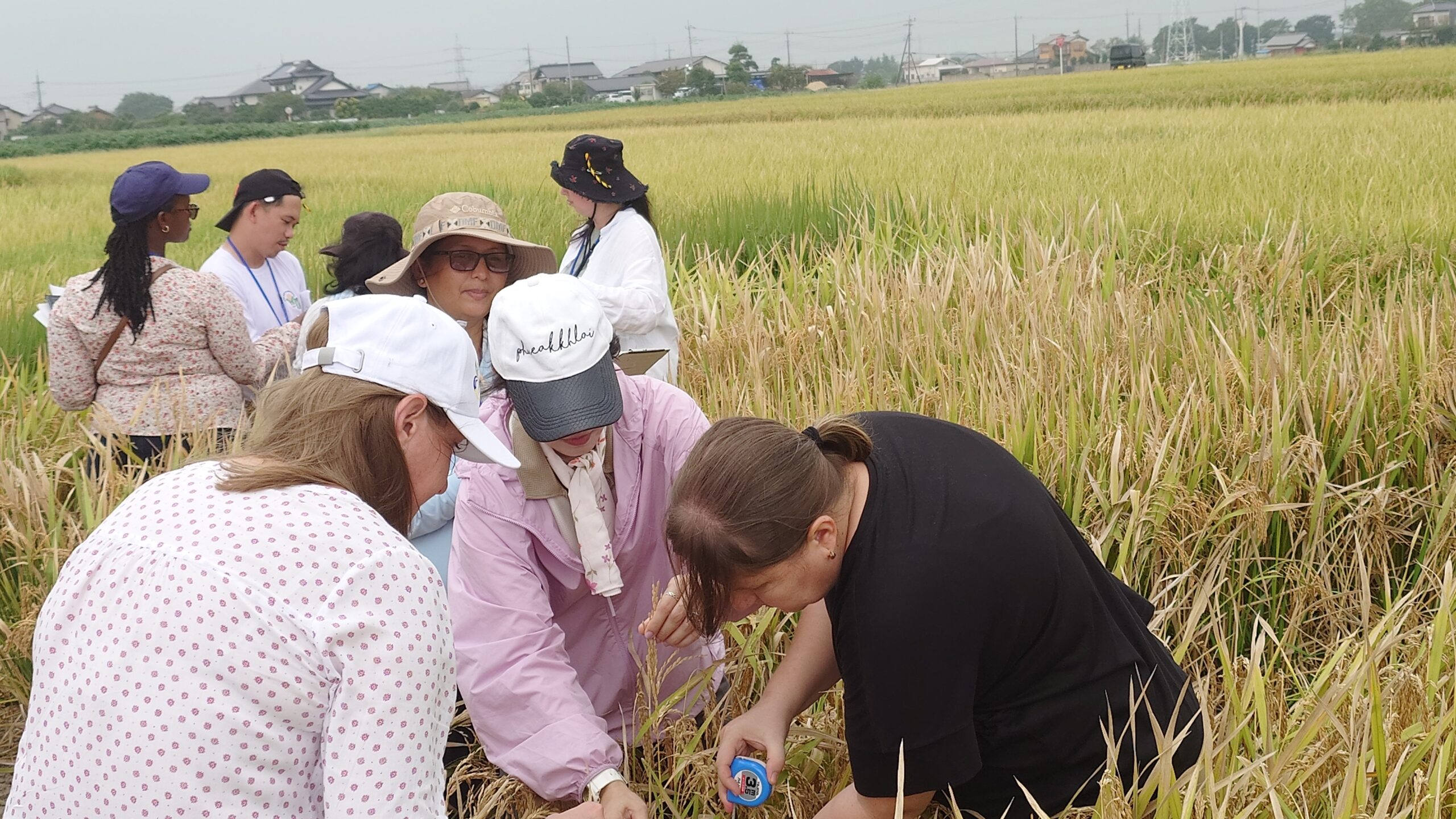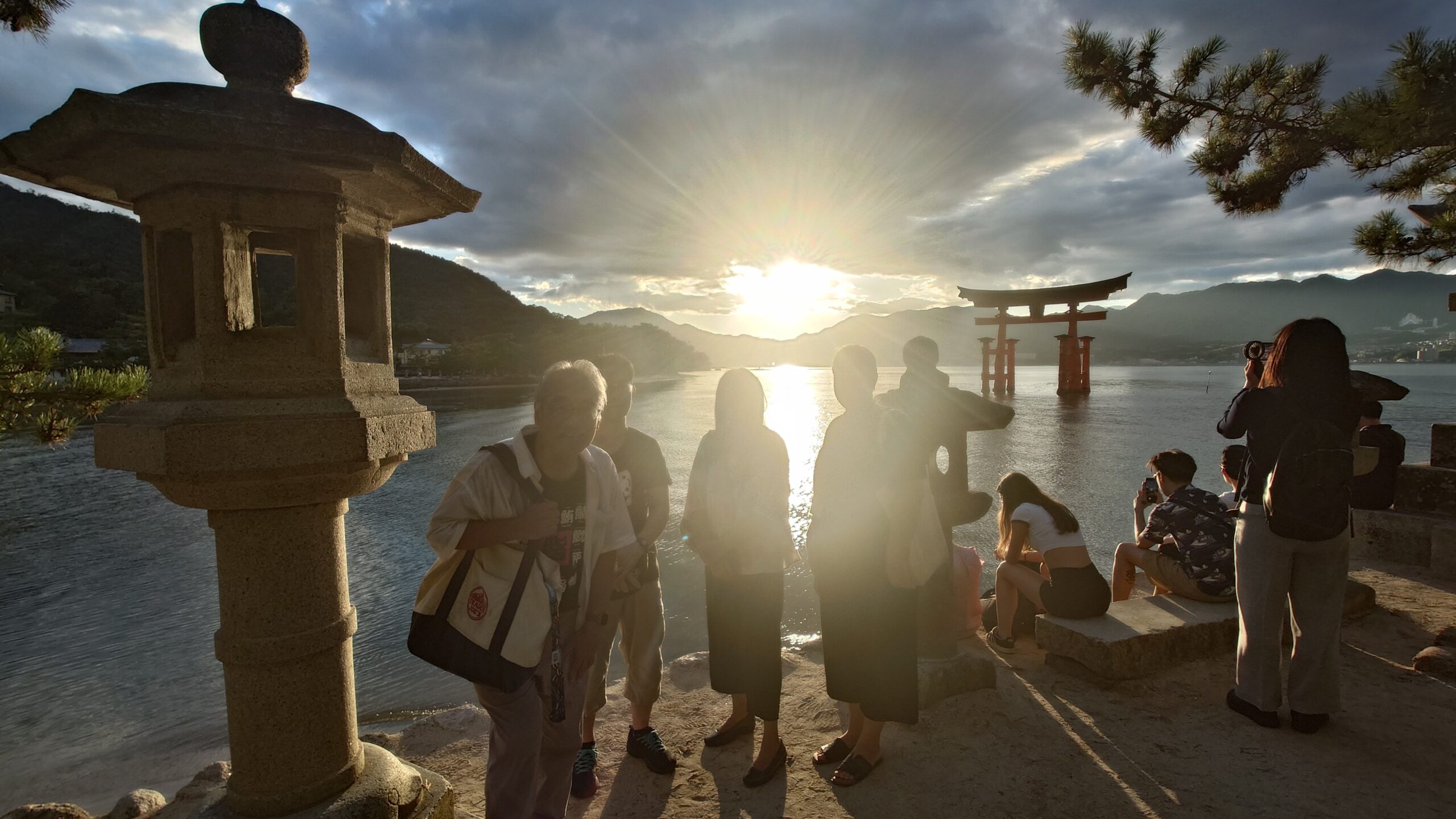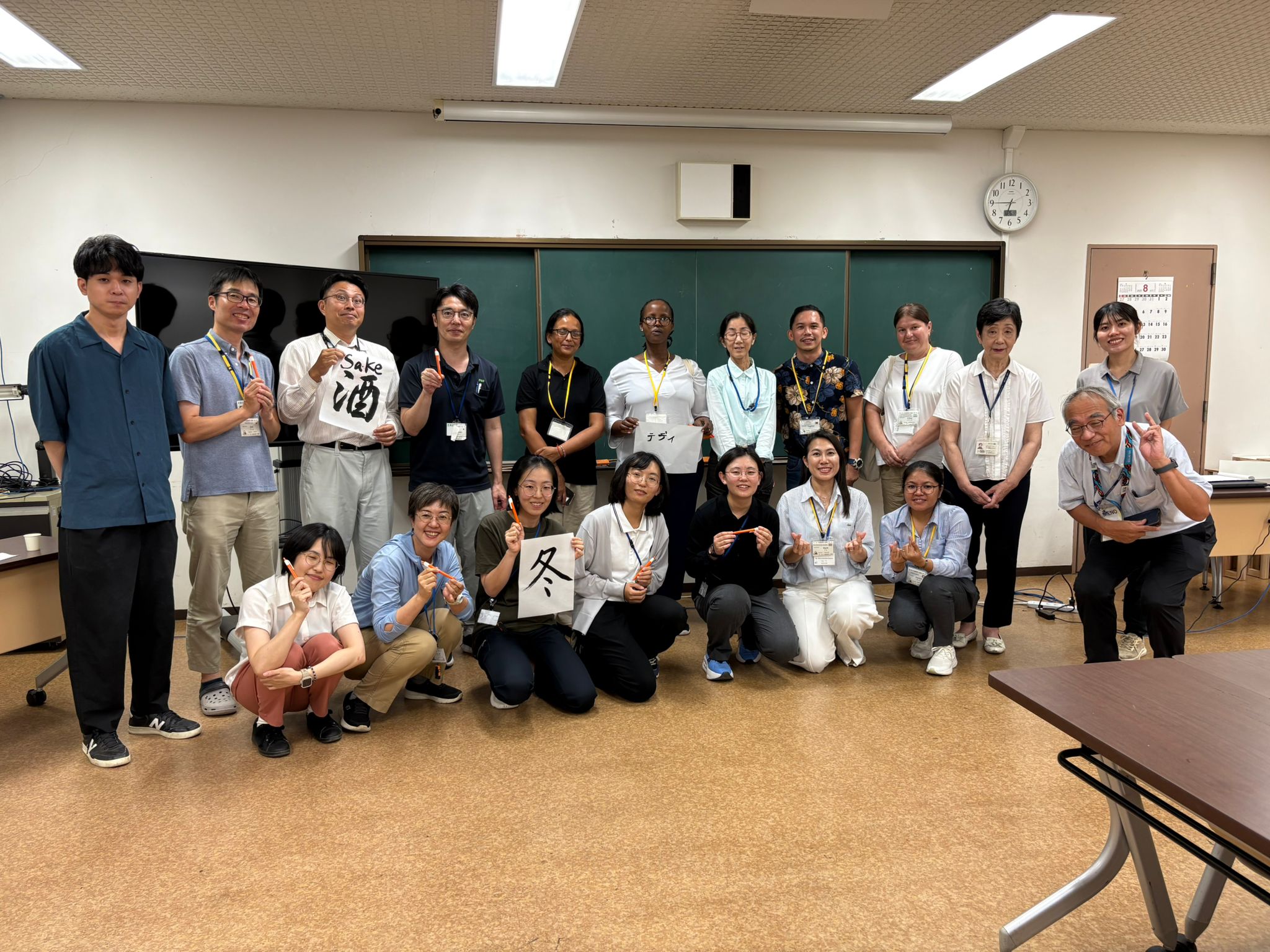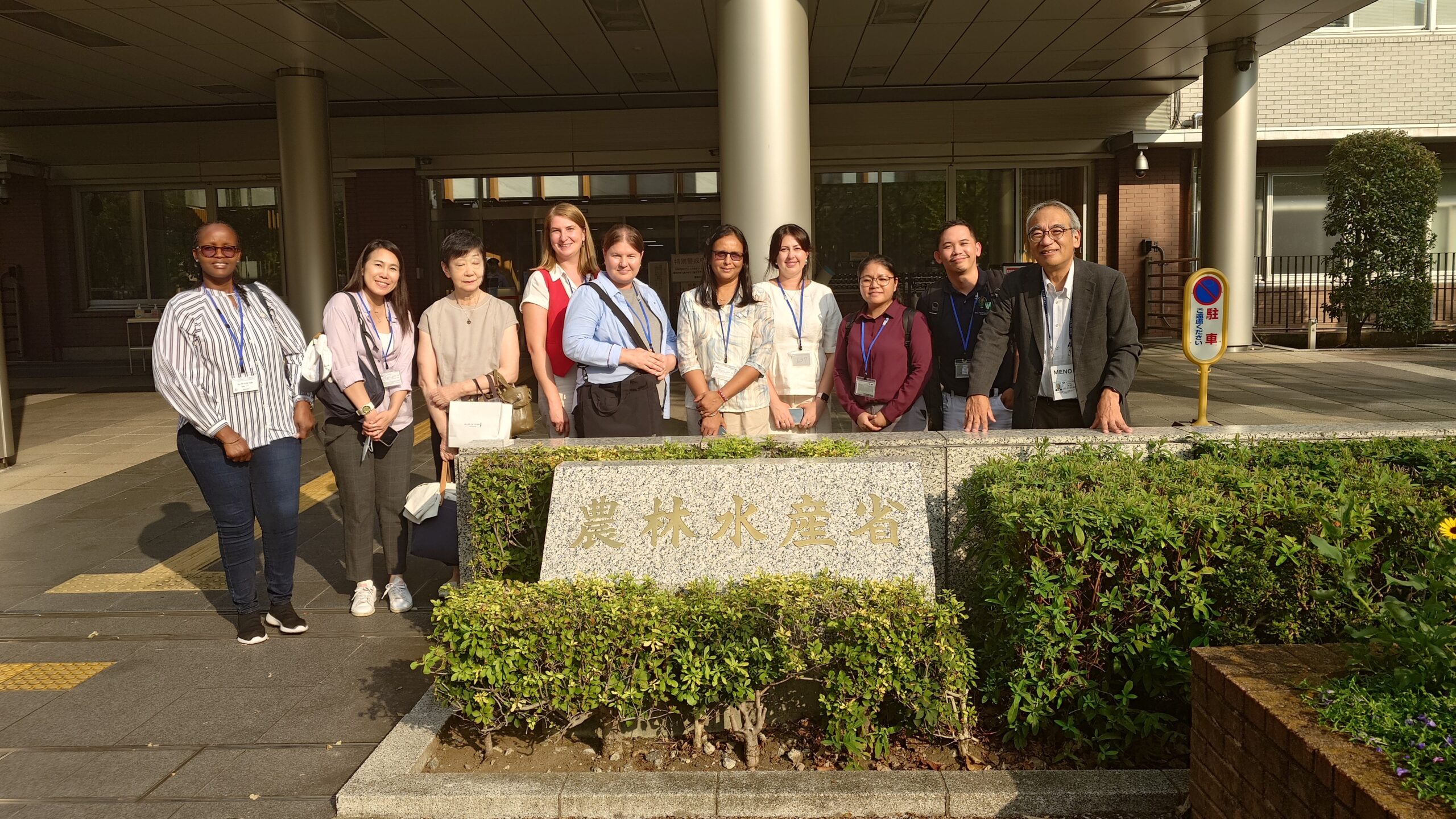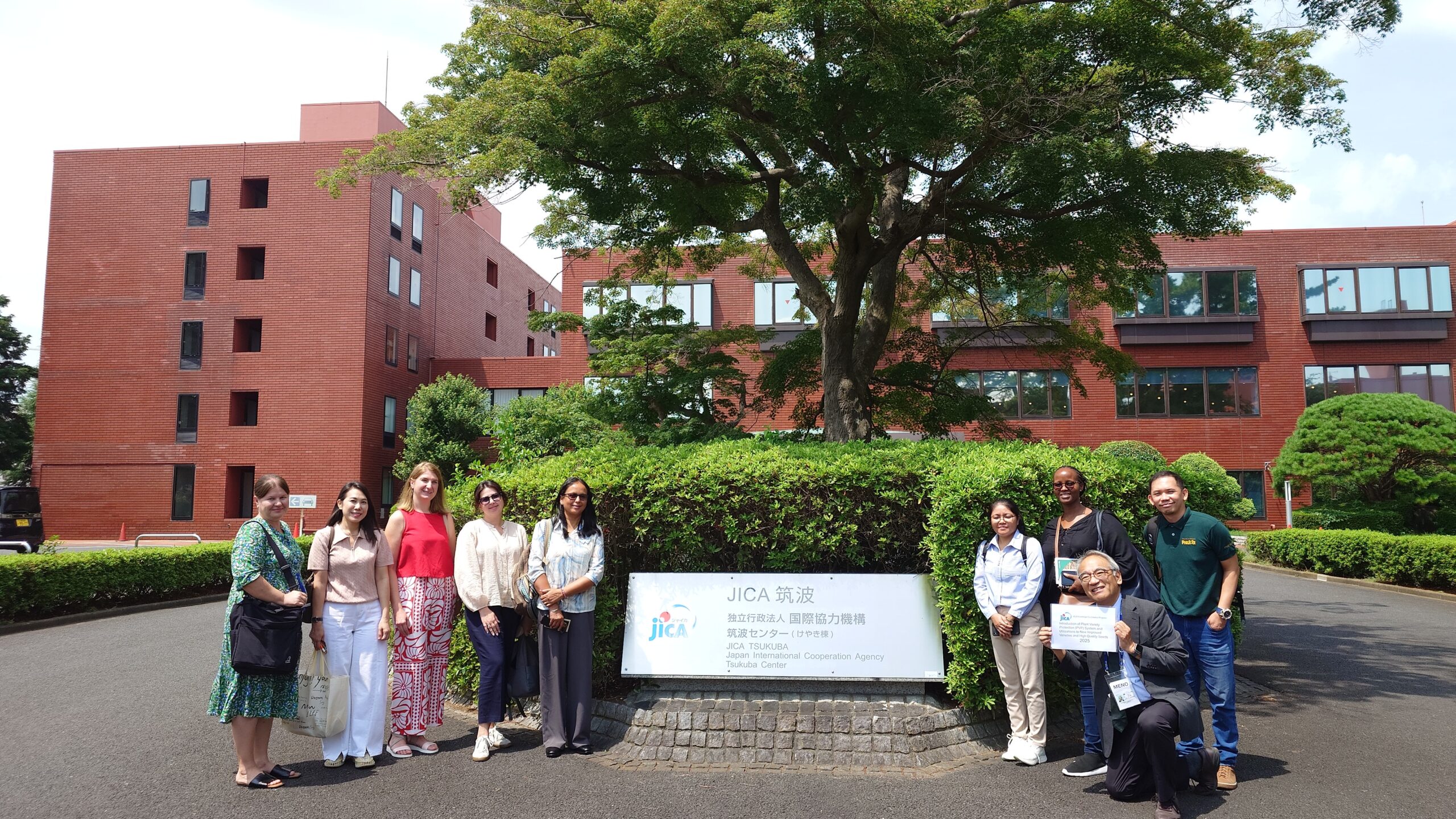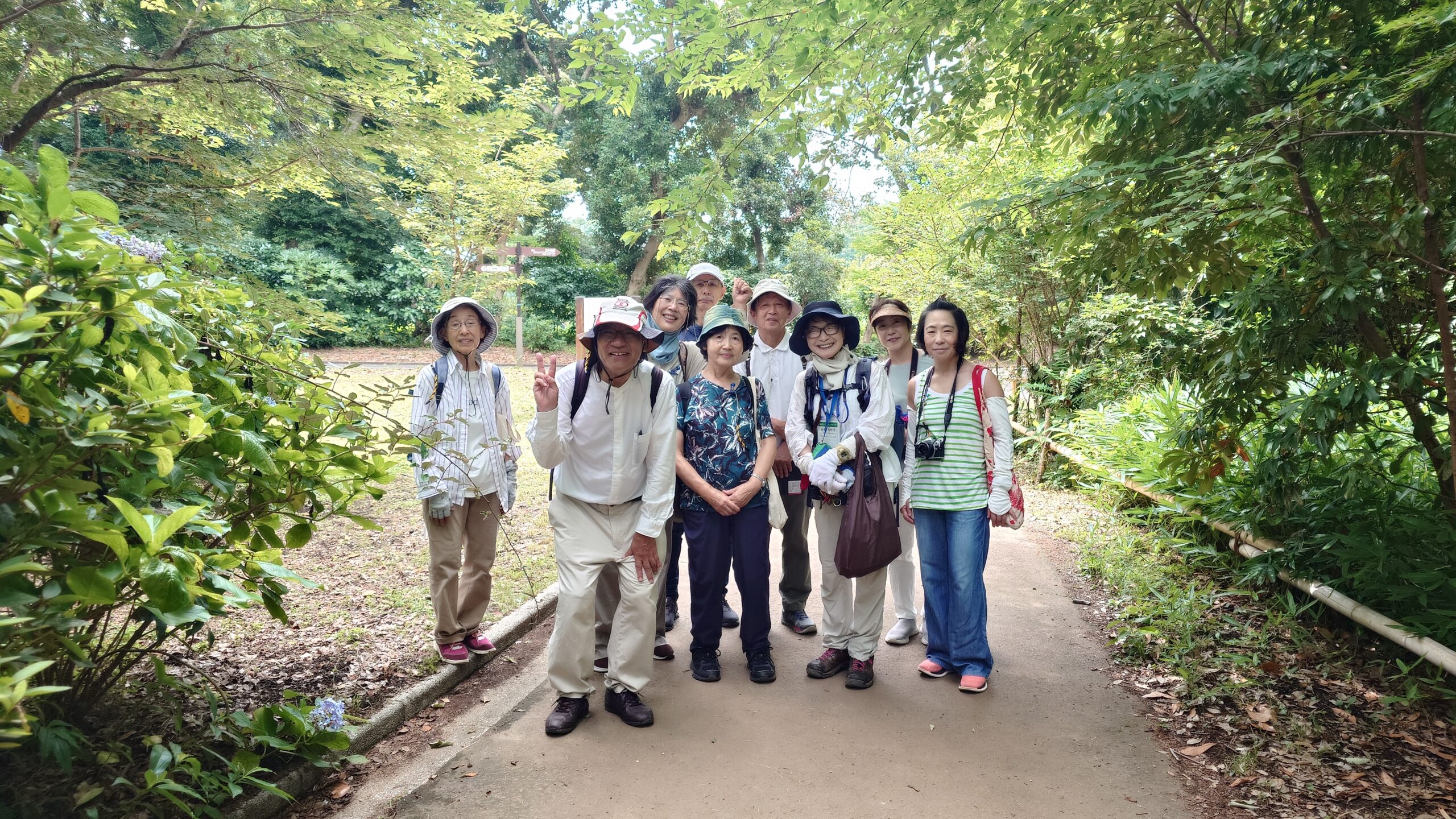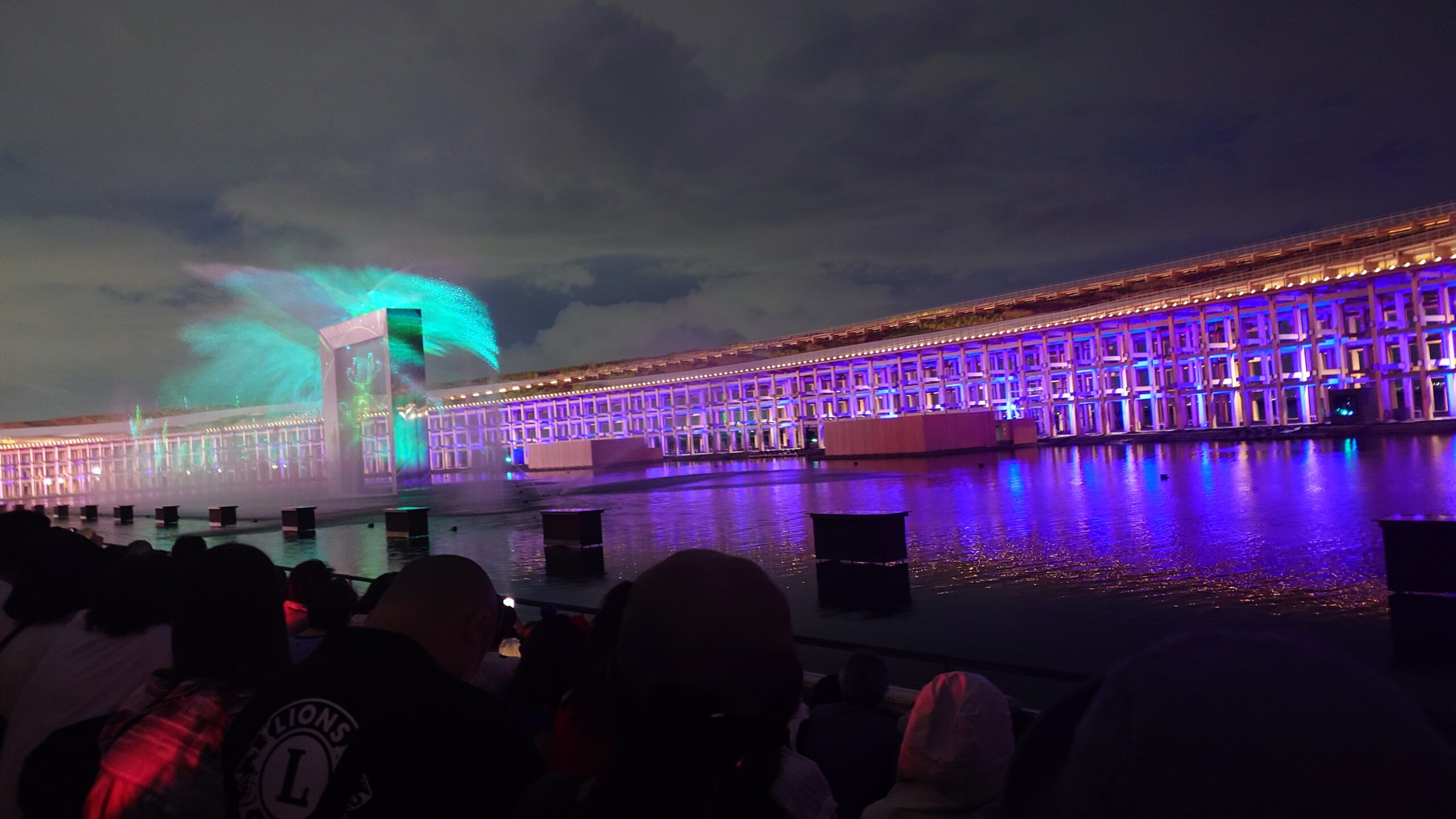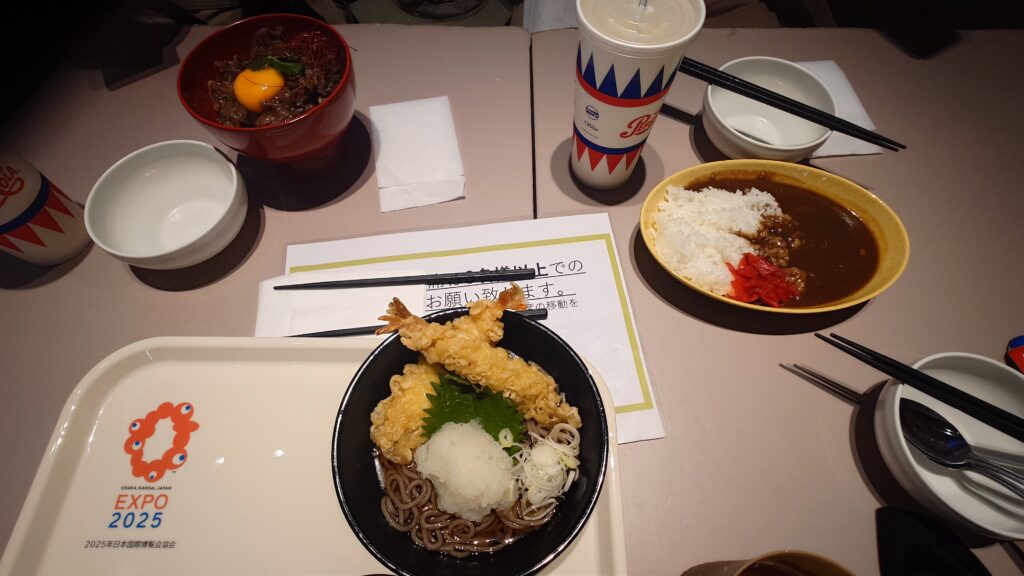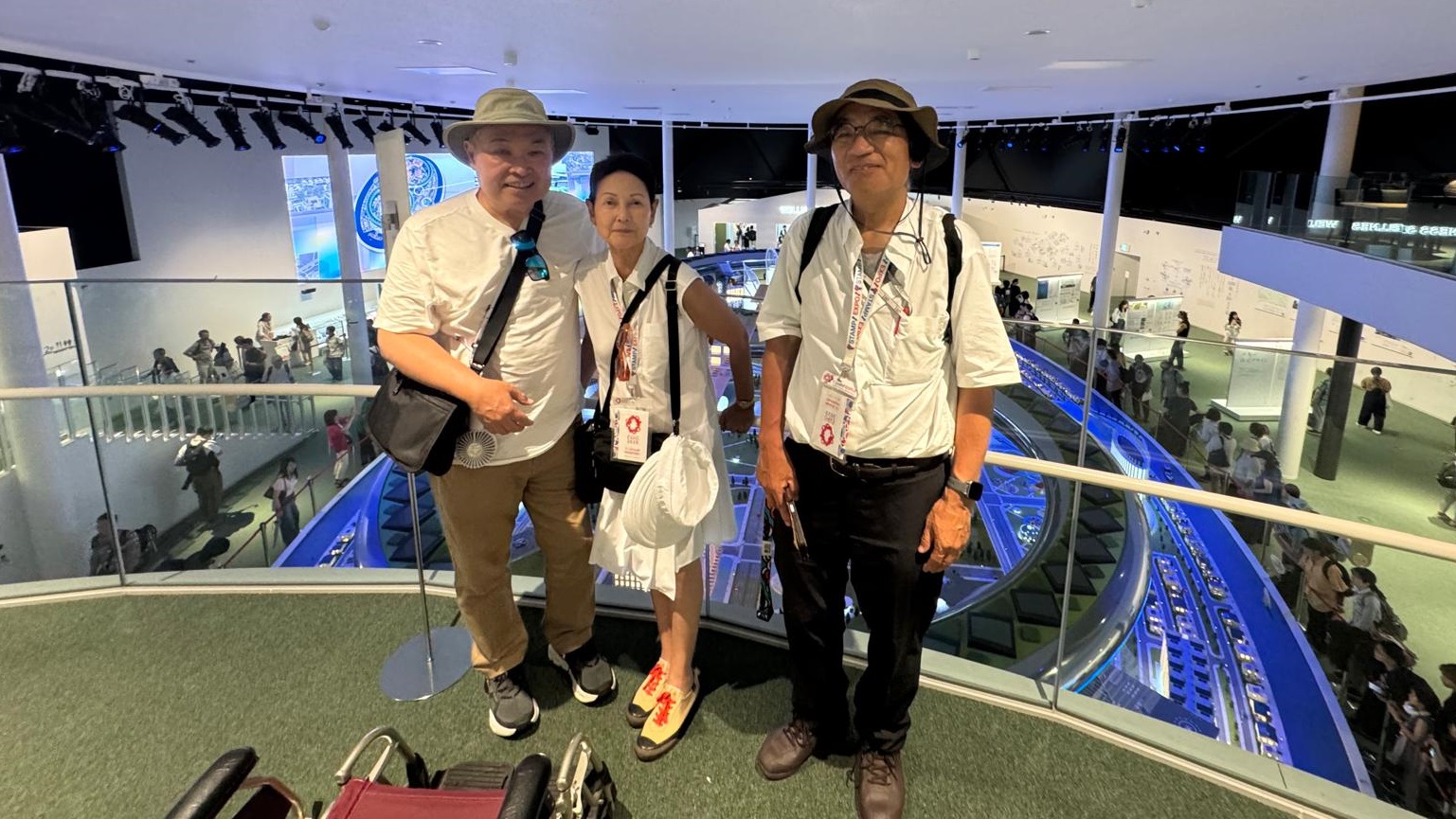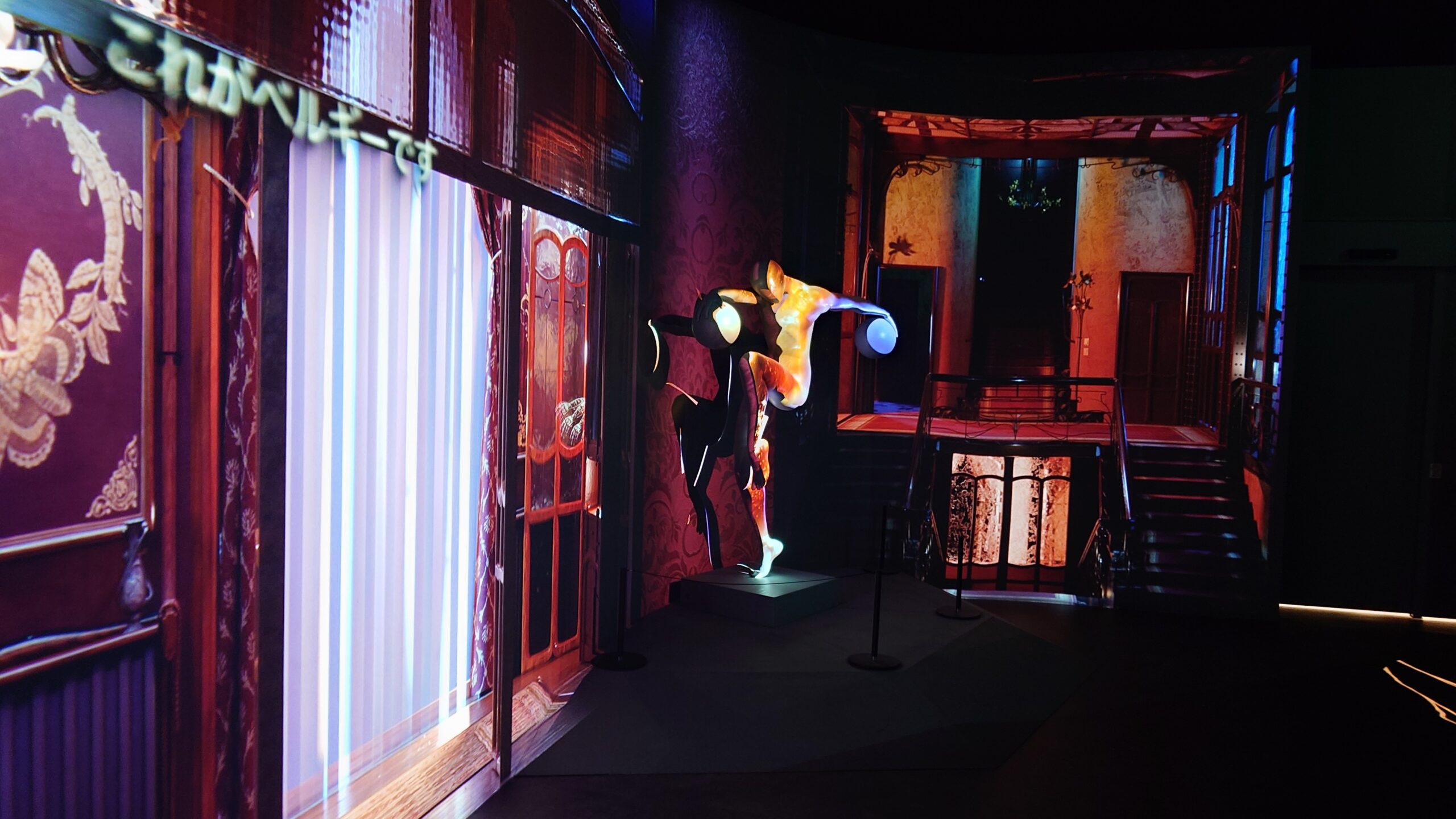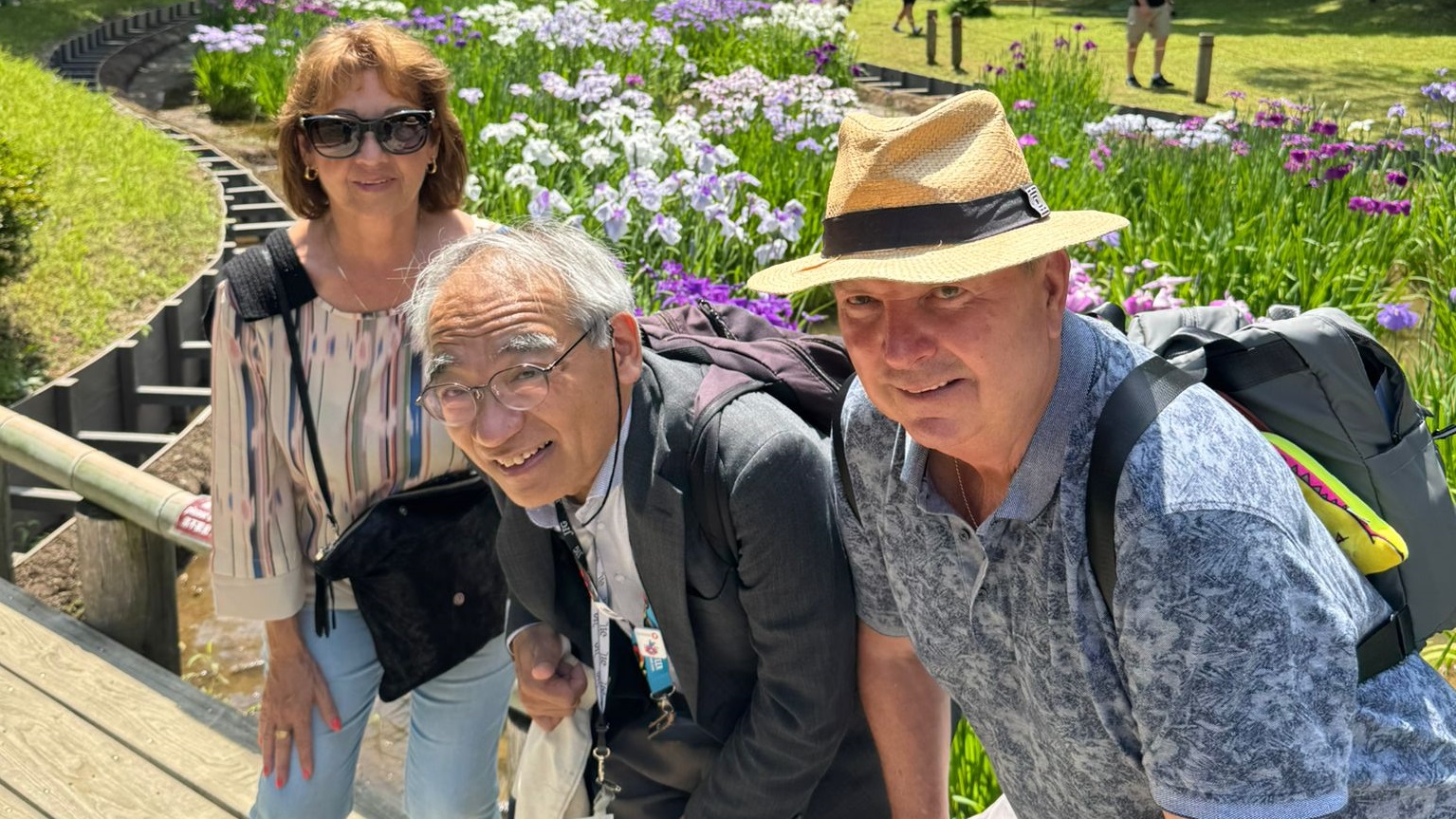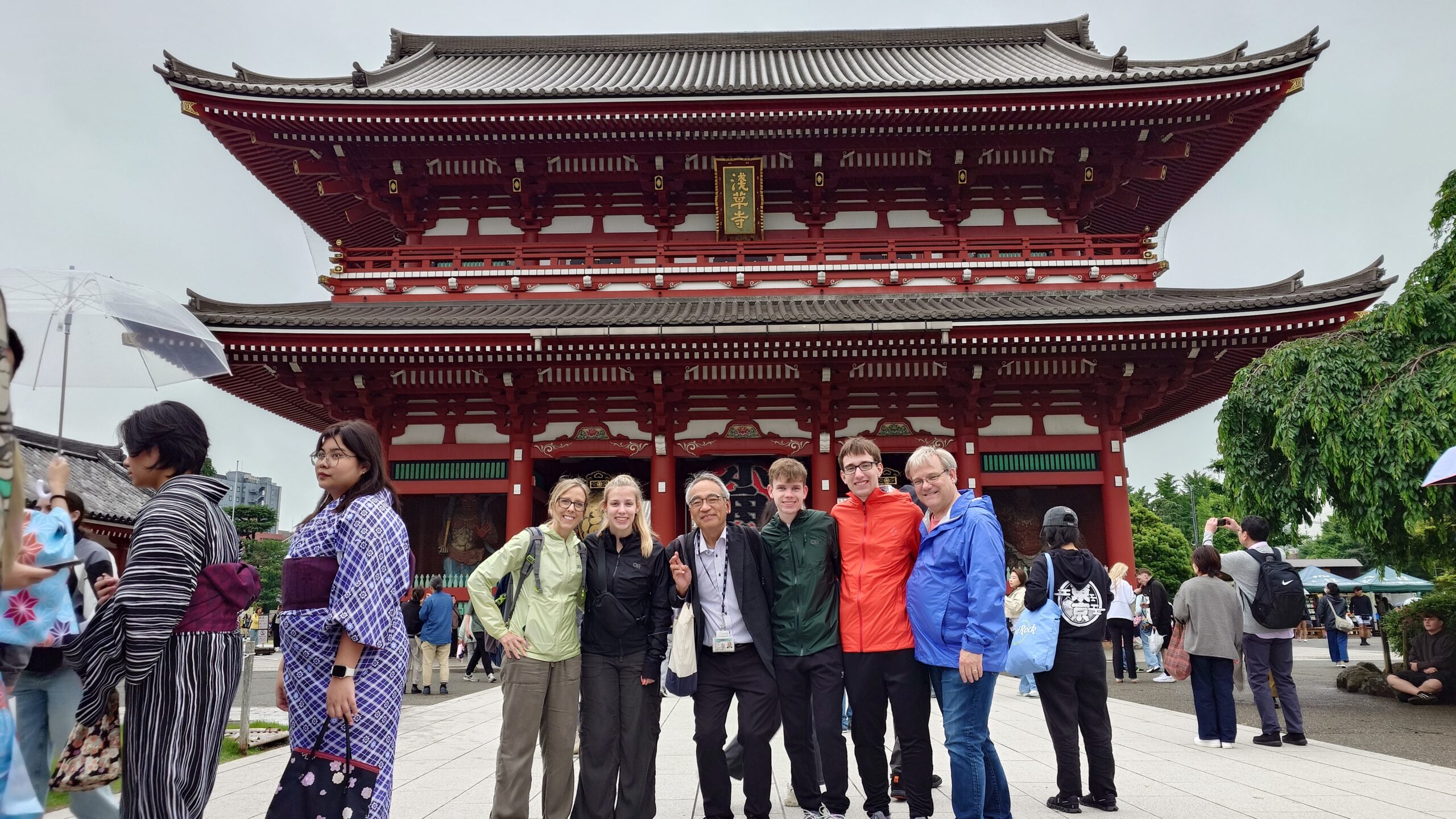Date: 10th July 2025
I guided a couple from Canada to the Osaka Kansai Expo on July 10th and 11th. They are the guests applied through the website of Tours by Locals, and since they booked in mid-June, we have been exchanging messages and preparing for about a month. First, the couple already had tickets for the two-day admission from the West Gate, so I started by confirming the reserved time and the location of the hotel, and reserving the shuttle bus, etc. Then, I was noticed the ID numbers on their tickets and applied for the advance lottery for three people. Since the 2-month advance lottery was already too late, I tried the 7-day advance lottery, but unfortunately all slots we tried unsuccessful.
Next, I secured two reservation slots for each of us through Available Slot Reservation, which starts at midnight three days before the entrance, on a first-come, first-served basis. I welcomed them in the hotel lobby, checked their QR code tickets, and headed to the shuttle bus stop they had reserved for the Expo site. Her husband had recently had heart surgery and would get tired if he walked long distances, so we decided to rent a wheelchair at the Accessibility Center before entering the venue. When we rent a wheelchair, we can enter the venue directly from the Accessibility Center using the priority lane, and we can also use the priority lane at many pavilion entrances and events within the pavilions, so we were able to get around quite efficiently.
After entering the venue, I asked them if they wanted to buy an official stamp book and do the stamp rally. The wife was very enthusiastic, so we immediately bought a stamp book and official goods at the official shop. We stamped the first page of the stamp book at the stamp stand near the West Gate and then started our walk. The location of the entrance stamp was difficult to find, but we could find easily by my experience as volunteers.
First, the daughter of the wife’s close friend, who works as a staff member at the USA Pavilion, met us in front of the Pavilion and we were able to enter with priority, despite the long line. She also sent us a Fast Pass for the French Pavilion next door and contacted the staff at the Korean Pavilion, which made it quite easy for us to get in.
USA Pavilion
The pavilion is themed “Imagine What We Can Create Together,” and introduces the history of the United States, especially advanced technologies such as space development, and displays Lunar samples. Please note that if you queue for the English explanation when entering, you will have a shorter wait time.
At the exit of the American Pavilion, they were chatting away about old times with a beautiful young staff member at the USA Pavilion who were acquaintance of them, when two kindergarten-aged girls approached us and asked me to sign their autograph books. They had come to the Expo looking forward to collecting autographs from people from all over the world, and they thought it would be easy to ask me because I was there as an interpreter. The young lady, of course, gladly accepted, and even asked the girls’ names and signed on. When the small girls handed the staff member a cherry blossom-shaped pin badge that they had brought as a thank you, she was so happy that she went inside the pavilion once and brought back a commemorative sticker, and they had a fun exchange of souvenirs. I fondly remembered the 1970 Osaka Expo, held when I was 10 years old, visiting the expo many times, visiting various pavilions, collecting stamps and autographs, and having various conversations with foreigners for the first time.
The guests were Canadian, but both were from the Philippines, so next we went to the Philippines Pavilion next to the US Pavilion. The husband uses a wheelchair, so we were able to enter smoothly from the priority lane. We also asked the staff in the pavilion to take the AI commemorative photo, which had been lined up inside the pavilion, so we were able to enjoy the attractions with priority.
Philippines Pavilion
The Philippine Pavilion, themed “Nature, Culture & Community — Woven Together for a Better Future,”
While introducing the diverse nature of regions of the Philippines, if you dance in front of the screen, you can see your alter ego as a flower or fish dancing in the video, or enjoy an AI-generated photo of you and fruit or other materials.
After that, we started to feel hungry, so we decided to have a light snack at a large food court near the Great Ring. I confirmed that there were no restrictions on the food for guests, but I still hadn’t fully understood our guests’ preferences, so I decided that this food court with its wide variety of dishes was the best place to have a light meal and entered. After looking at the wide variety of dishes, the guests decided to have gyoza and cold ramen at Osaka Osho. While eating, the guest’s wife saw a young girl nearby holding a food sample of a Wagyu hamburger and trying to attract customers, and told me that she wanted to take a commemorative photo with the young girl with food sample. When I told the young girl about this, not only the young girl but also the store manager kindly joined us, even though we had not purchased anything at this shop, and we were able to take a fun commemorative photo. The girl of the shop said that she wanted to study abroad in Canada, so she had a lively conversation with the guests. These kinds of various encounters and conversations are the best part of the Expo.
After that, we went to the Saudi Arabia Pavilion, which was recommended by a friend of the guest’s wife. The Saudi Arabian Pavilion also has a priority route for wheelchair visitors, but even on this priority route, we ended up waiting in the shadow of the building for about 30 minutes (it seems that the normal route takes more than an hour). The husband of the guest was in a wheelchair, and I asked the wife to sit on a folding chair that I had brought with me and wait for a while. To prevent the guests from getting heatstroke, I occasionally provided them with cold drinks, such as frozen mineral water that I had bought at a convenience store, to keep them hydrated.
Saudi Arabia Pavilion
Under the theme of “Together for a Better Future,” the Saudi Arabia Pavilion captures the Kingdom’s deep traditions, showcasing an ancient culture striving toward new possibilities for a shared future. It also introduces various initiatives toward the next international World Expo, Expo 2030 Saudi Arabia.
After the Saudi Arabian Pavilion, we went to the Korea Pavilion. A friend of the guest at the USA Pavilion had contacted the staff at the Korea Pavilion and was waiting for us in front of the pavilion, and she accompanied us throughout the pavilion. We then ate yangnyeom chicken and bibimbap at a Korean restaurant that the guest’s wife had been looking forward to. The food was authentic, and the portions were generous compared to the price, so we were able to enjoy it at a leisurely pace. Being able to enjoy authentic food at each country’s pavilion is one of the great things about the Expo.
Korean Pavilion
The main theme of the Korean Pavilion is “With Hearts: Connecting Hearts, Lives in Bloom”. Upon entering the pavilion, visitors can enjoy a hands-on experience, such as listening to music synthesized from their recorded voices, and blowing into the venue turns into hydrogen gas bubbles that rain down on the pavilion. In addition, you can enjoy hearty Korean cuisine at the restaurant in the museum.
After that, we went to the only one we had made a reservation for in advance, the joint exhibition hall of the Iida Group and Osaka Metropolitan University. Our reservation was for 5 o’clock, but at that time, thunderclouds were passing over the Expo site, so we couldn’t wait in line outside the pavilion, so we decided to wait for the thunderclouds to pass under the Great Ring right next to it. However, since the husband of our guest was in a wheelchair, he was able to enter first when the thunderclouds passed and admission resumed.
Joint Pavilion Iida Group × Osaka Metropolitan University
This is a joint exhibition pavilion by the Iida Group, an architectural firm, and Osaka Metropolitan University, a local public university in Osaka. The concept of the exterior design is “Sustainable Mobius”. The fusion of the future and tradition is made tangible by covering the entire surface with specially processed Nishijin brocade fabric. Inside the building, we will introduce “futuristic housing” and “community planning” for healthy and comfortable living with new technologies and new energy sources for a decarbonized society. This is a joint exhibition by a university that conducts research on new technologies such as artificial photosynthesis for the new era, and an architectural firm that aims to realize it.
After this, we tried to enter the French Pavilion with a fast pass, but it seems that there was a problem inside the pavilion due to a thunderstorm just before, and all admissions were suspended with no prospect of resuming, so I headed for the Italian Pavilion instead. The Italian Pavilion has a lane for wheelchair visitors, but even in that priority lane, we had to wait an hour, so we decided to enter the nearby Belgian Pavilion. We were able to enter the priority lane of the Belgian Pavilion immediately with almost no queue.
Belgian pavilion
Pavilion is located in the “Saving Lives” district, with the theme Human Regeneration. Where it began as an opportunity to showcase the current state of industrial and scientific progress, the focus is now increasingly on branding countries and impressing and entertaining visitors. It displays Belgium’s leading role in producing vaccines for pandemic diseases.
After that, we walked around some of the small pavilions in the Commons Pavilion, headed to the West Gate, watched a drone show near the gate, and then headed home. I should have booked the shuttle bus from the West Gate to Sakurajima Station at the venue before heading to the West Gate, but the operation on the shuttle bus reservation website was complicated, so I left the gate without making a reservation.
Anticipating the crowds of people leaving the gate after the drone show, we watched the show close to the gate, and returned the guest’s wheelchair at the Accessibility Center after leaving the wheelchair gate and efficiently picked up the shuttle bus stop, so we were able to get on the bus with almost no wait.
Today, I tried to register some pavilions by on-site registration several times from 10 minutes after entering, but it didn’t work. I was trying to find an available slot for three people, including two guests, through on-site registration, but it didn’t work well, and the operation was complicated, so I had to enter the guest’s ticket ID several times, which took time and didn’t work.
This tour was organized through Tours by Locals.
Review from the guest posted to Tours by Locals
I would give Atsuhiro 7 stars if I could. He had fantastic command of the language we are comfortable with: English. He was efficient and most knowledgeable. He gave us a concise history of Japan. He explained to us the culture of Japan and her different regions. He was caring and always made sure we were enjoying ourselves. He is tops!






